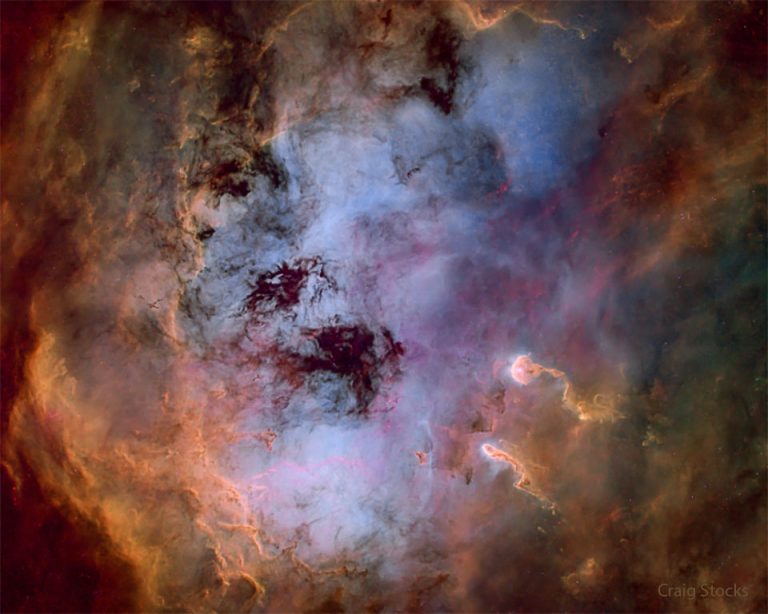哈勃影像: 蝌蚪星系
A spiral galaxy is shown on the upper left with a really long tail of stars and blue-glowing gas trailing to the lower left. Please see the explanation for more detailed information.
左上方是一个螺旋星系,它有一条由恒星和蓝色发光气体组成的长尾,延伸至左下角。有关更多详细信息,请参阅说明。

A spiral galaxy is shown on the upper left with a really long tail of stars and blue-glowing gas trailing to the lower left. Please see the explanation for more detailed information.
左上方是一个螺旋星系,它有一条由恒星和蓝色发光气体组成的长尾,延伸至左下角。有关更多详细信息,请参阅说明。

2023年3月1日 The Flaming Star Nebula Image Credit & Copyright: Thomas Röell Explanation: Is star AE Aurigae on fire? No. Even though AE Aurigae is named the Flaming Star and the surrounding nebula IC 405 is named the Flaming Star Nebula, and even though the nebula appears to some like a swirling flame, there is no fire. Fire, typically defined as the rapid molecular acquisition of oxygen, happens only when sufficient oxygen is present and is not important in such high-energy, low-oxygen environments such as stars. The bright star AE Aurigae occurs near the center of the Flaming Star Nebula and is so hot it glows blue, emitting light so energetic it knocks electrons away from surrounding gas. When a proton recaptures an electron, light is…

2022年12月19日 The Tadpole Nebula in Gas and Dust Image Credit & Copyright: Craig Stocks (Utah Desert Remote Observatories) Explanation: What’s causing the commotion in the Tadpole Nebula? Star formation. Dusty emission in the Tadpole Nebula, IC 410, lies about 12,000 light-years away in the northern constellation of the Charioteer (Auriga). The cloud of glowing gas is over 100 light-years across, sculpted by stellar winds and radiation from embedded open star cluster NGC 1893. Formed in the interstellar cloud a mere 4 million years ago, bright newly formed cluster stars are seen all around the star-forming nebula. Notable on the lower-right of the featured image are two relatively dense streamers of material trailing away from the nebula’s central regions. Potentially sites of ongoing star formation in…

2020 January 28 Star Formation in the Tadpole Nebula Image Credit: WISE, IRSA, NASA; Processing & Copyright: Francesco Antonucci Explanation: What’s all of the commotion in the Tadpole Nebula? Star formation. Dusty emission in the Tadpole Nebula, IC 410, lies about 12,000 light-years away in the northern constellation of the Charioteer (Auriga). The cloud of glowing gas is over 100 light-years across, sculpted by stellar winds and radiation from embedded open star cluster NGC 1893. Formed in the interstellar cloud a mere 4 million years ago, bright newly formed cluster stars are seen all around the star-forming nebula. Notable near the image center are two relatively dense streamers of material trailing away from the nebula’s central regions. Potentially sites of ongoing star formation in IC…